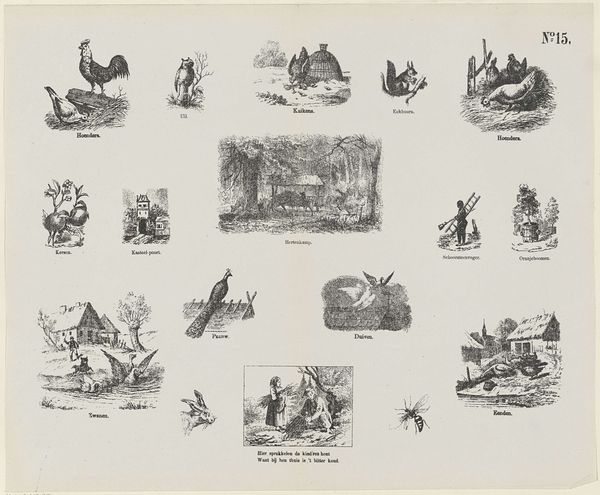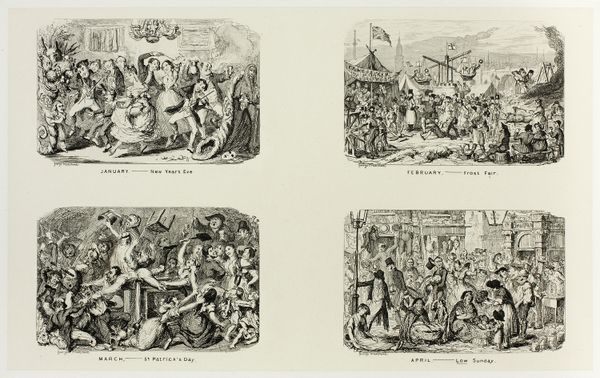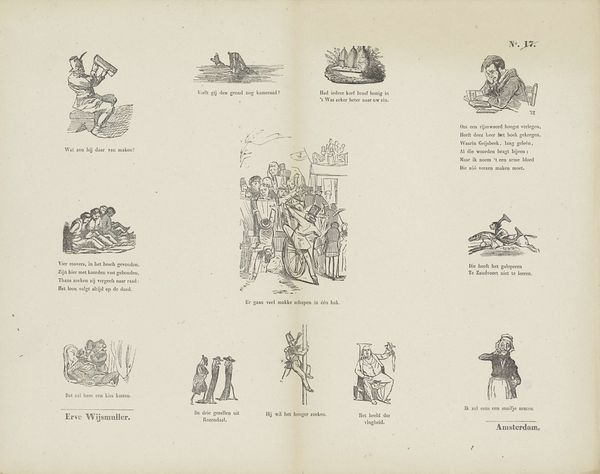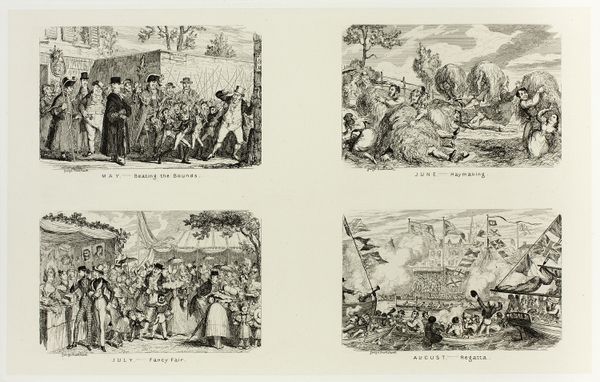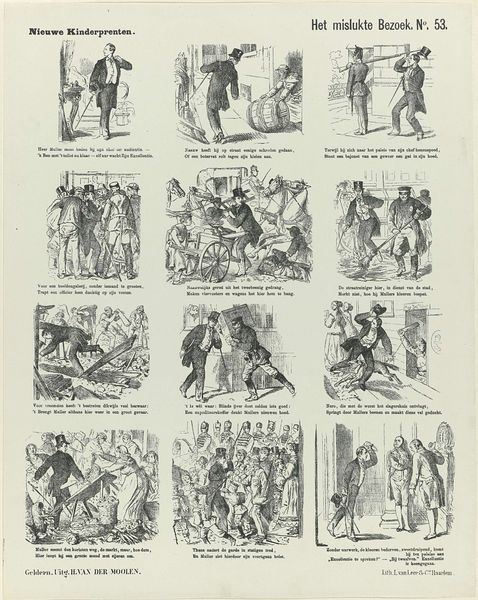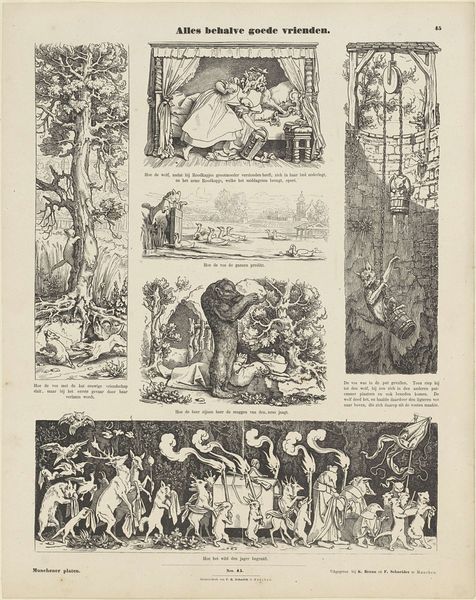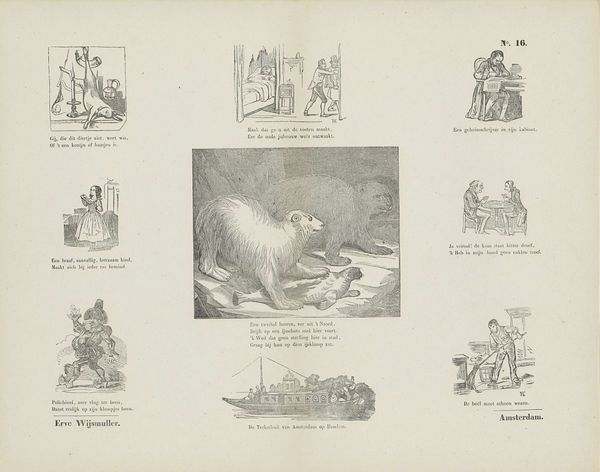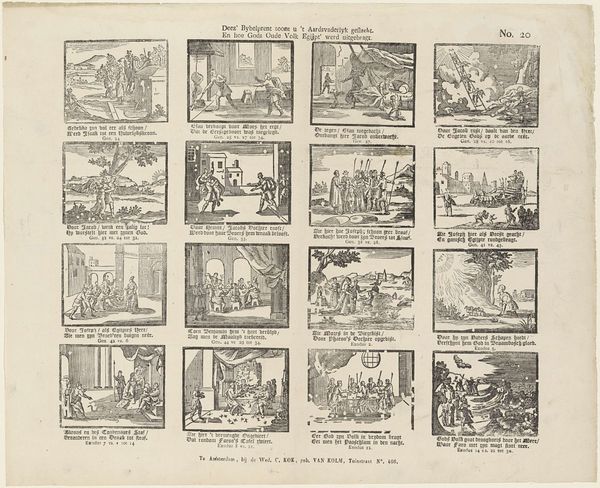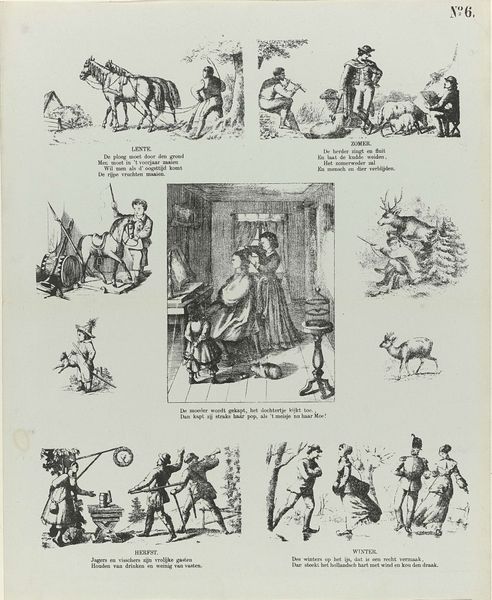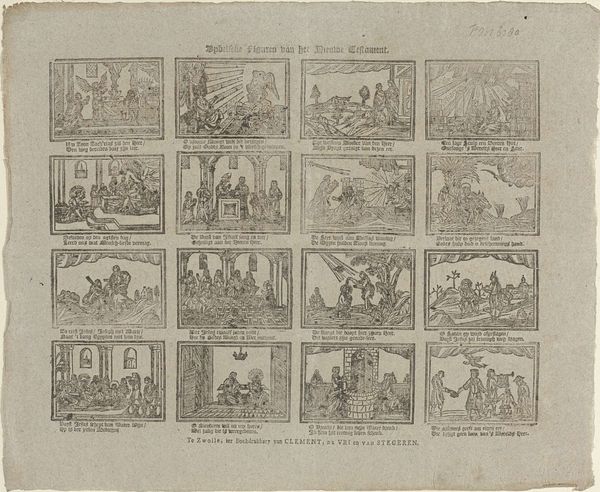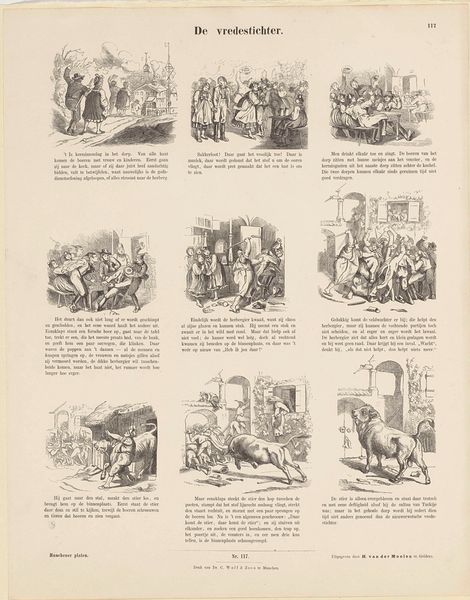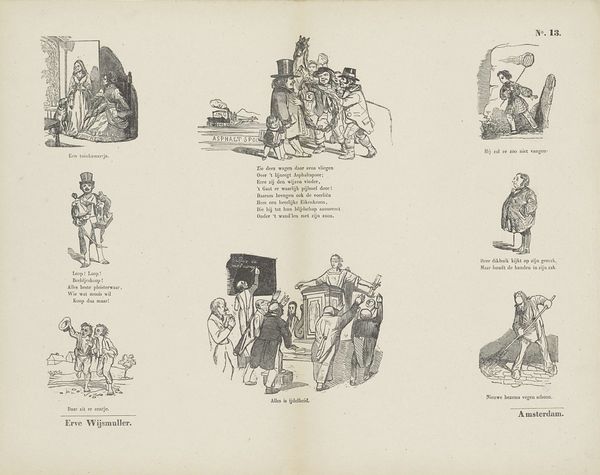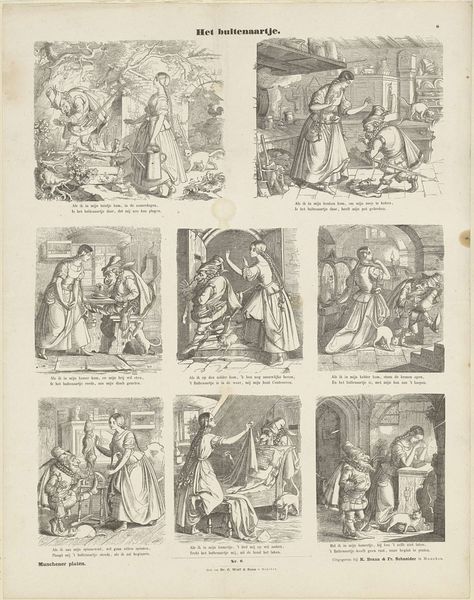
Dimensions: height 341 mm, width 429 mm
Copyright: Rijks Museum: Open Domain
Editor: This print, titled "Verschillende Taferelen," dates to 1873 and is credited to De Ruyter & Meijer. It features an array of miniature scenes and vignettes. The overall effect feels like a collection of fragments or glimpses into different stories. How would you interpret a work with such a scattered, narrative structure? Curator: It's interesting you use the word 'scattered.' I'd say that quality reflects a certain type of 19th-century visual culture—think of illustrated magazines or children’s books of the era. These composite prints, often employing engraving or similar techniques for reproduction, circulated widely and served a specific social function. Editor: Social function? Could you elaborate? Curator: Certainly. Prints like this were frequently pedagogical, subtly conveying moral lessons or social values. Consider the diverse scenes: children playing, domestic settings, glimpses of military life... Are they separate narratives or elements of a cohesive world? The relationships –or lack thereof— are telling. The decision to present various disconnected scenes raises questions. Are the images randomly assembled or is there some deeper meaning based on, perhaps, the Dutch societal values they reflect or intended to reinforce? What does that variety *do* to the viewer? Does it encourage them to create their own narratives and draw their own lessons? Editor: I hadn't considered it from a societal perspective. I see now that each individual scene might hold specific values, and that presenting them together could be a commentary on Dutch society. Curator: Exactly! And remember, prints like these weren’t just art objects; they were accessible, reproducible images that played an active role in shaping public opinion and disseminating ideas. Understanding their place in this wider context can reveal fascinating insights into the era's social and political landscape. Editor: That's really fascinating, a new context which I appreciate, I definitely look at it differently now! Thanks!
Comments
No comments
Be the first to comment and join the conversation on the ultimate creative platform.
